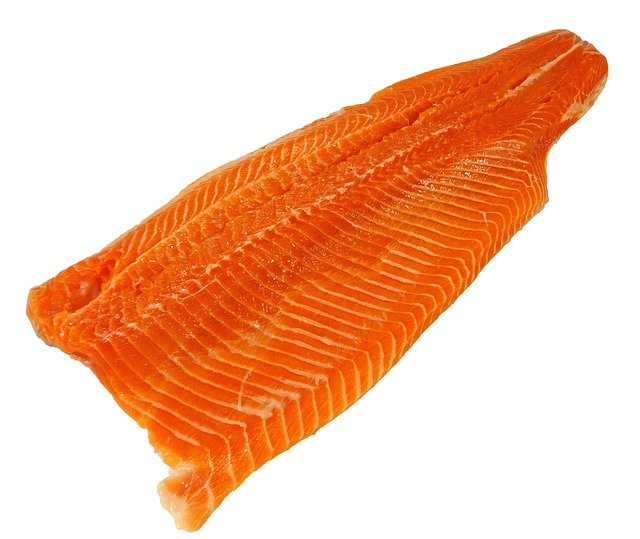
One of the most popular fish choices in America is Salmon, the tender, reddish, firm fish, thanks in part to its flavour, which is rich and buttery and good for your health.
You have the option to choose from a variety of Pacific salmon that include Coho, Pink, Sockeye, King (Chinook), many of which come from the wild. Atlantic salmon is an option too. Fishing for it is prohibited in the United States, so the ones found in American supermarkets are farm-raised. For UK readers I would recommend you see best smoked salmon UK.
Nutritional Benefits
A serving of salmon, which is 3 to 4 ounces, is about 200 calories. It is very low in saturated fat and an excellent source of protein as well as vitamin B12. It is also rich in potassium along with other nutrients such as vitamin D and iron.
Health Benefits
Vitamin B12 in salmon keeps nerve cells and blood functioning properly and helps in the making of DNA. For your health, however, salmon’s true beauty is its wealth of omega-3 fatty acids. The vast majority of omega-3 fatty acids are “essential” fatty acids. The body cannot make them, but they play important roles in the body.
Omega-3 fatty acids lower your chances of having:
- Dementia
- Cancer (some types)
- Cardiovascular disease (including stroke and heart attacks)
- Alzheimer’s disease along with other cognitive diseases
Omega-3 fatty acids can also ease the effects of rheumatoid arthritis.
According to experts, all adults should eat at least 2 portions (8 ounces in total) of seafood a week, particularly fish high in omega-3 fatty acids like salmon. The EPA and FDA both recommend that children eat 1 to 2 servings (2 to 4 ounces) of seafood a week starting at age 2. Young children and pregnant women should avoid fish with high levels of mercury. Fortunately, salmon isn’t one of them.
Risks
Omega-3s might have numerous health benefits, but high doses of them, like in supplements, may cause bleeding problems if you are also taking anticoagulant medication. That’s why it is always advisable to stay within the above guidelines.
The debate about the benefits of wild vs. farmed salmon is still ongoing. Some claim that wild fish are lower in contaminants such as antibiotics and chemicals. Others, however, claim that farmed Atlantic salmon is the wise choice due to state and federal laws that regulate its growth and harvesting.
How to Prepare
Fish ideally should not smell “fishy”, but rather mild and fresh. You should only buy refrigerated fish or fish that’s displayed on a large bed of ice. Frozen seafood, on the other hand, should be solid and not squishy or leaking.
Keep everything clean when preparing salmon. That includes the cutting boards, your hands, and the utensils you will be using. That way, bacteria will not spread from the fish you are preparing to other foods.
If your salmon is frozen, it should be thawed gradually in the refrigerator, preferably overnight. If you need it quickly, you can always thaw it in cold water in a leak-proof bag. You can also use a microwave for thawing, but it should be cooked immediately afterwards.
Seafood or any other perishable foods should never be left at room temperature for over 2 hours.
You need to cook the salmon to an internal temperature of 145°F until the flesh is opaque and separates easily with a fork. It can be eaten raw, but ensure that you first freeze it to get rid of parasites. Germs may pop up in raw fish, however, which is why experts always recommend that you bake, poach, grill, or broil it.
